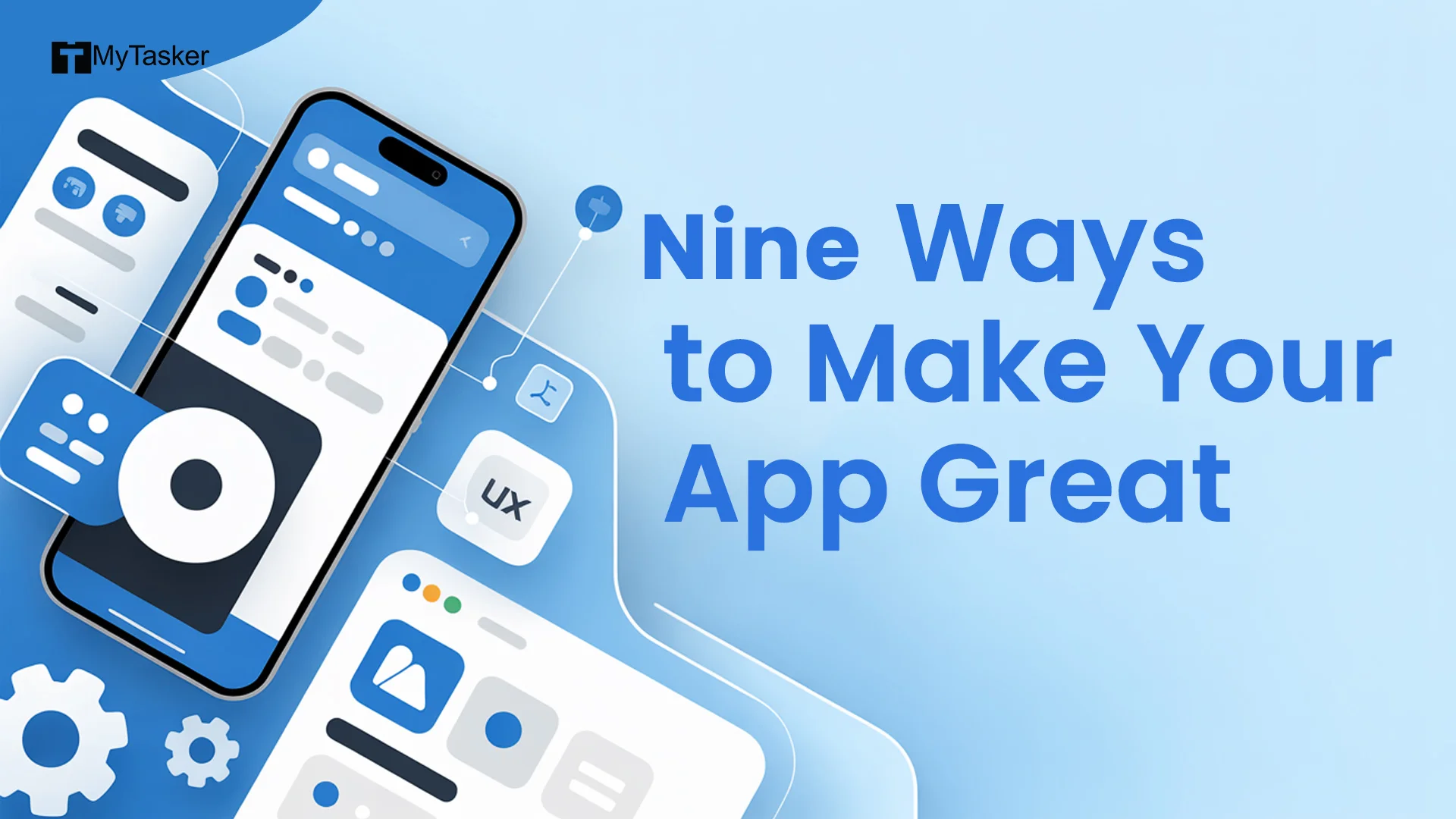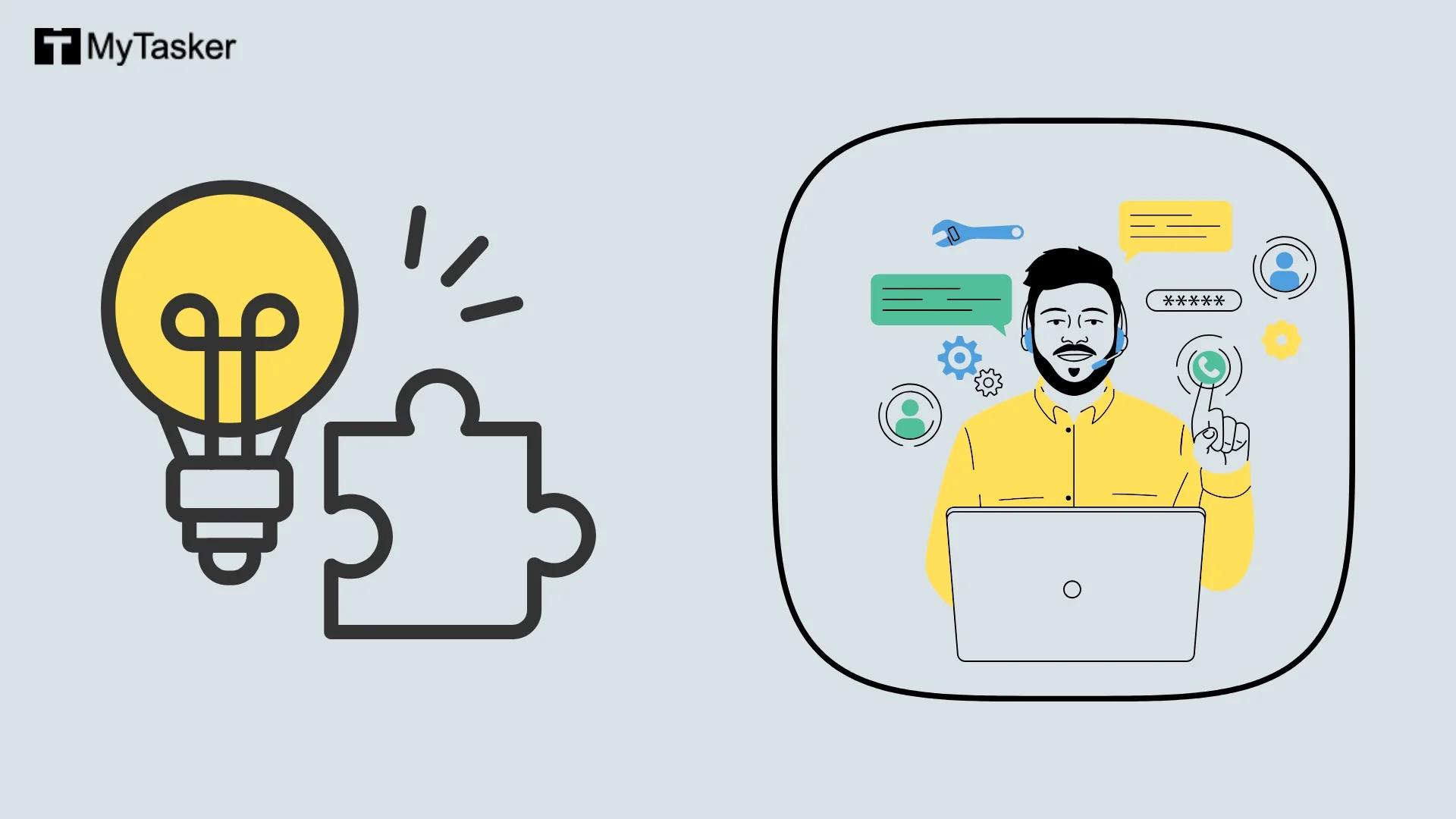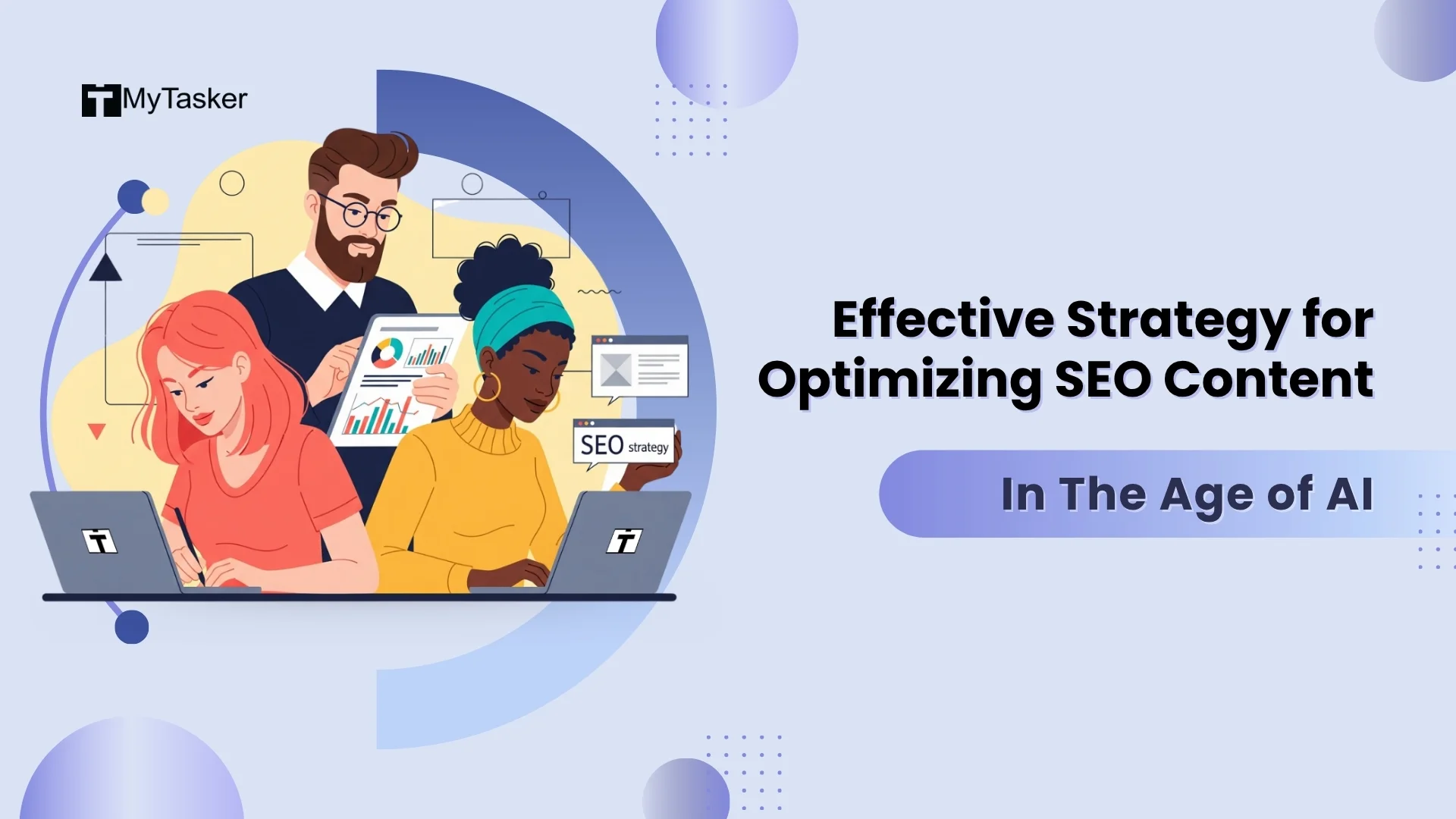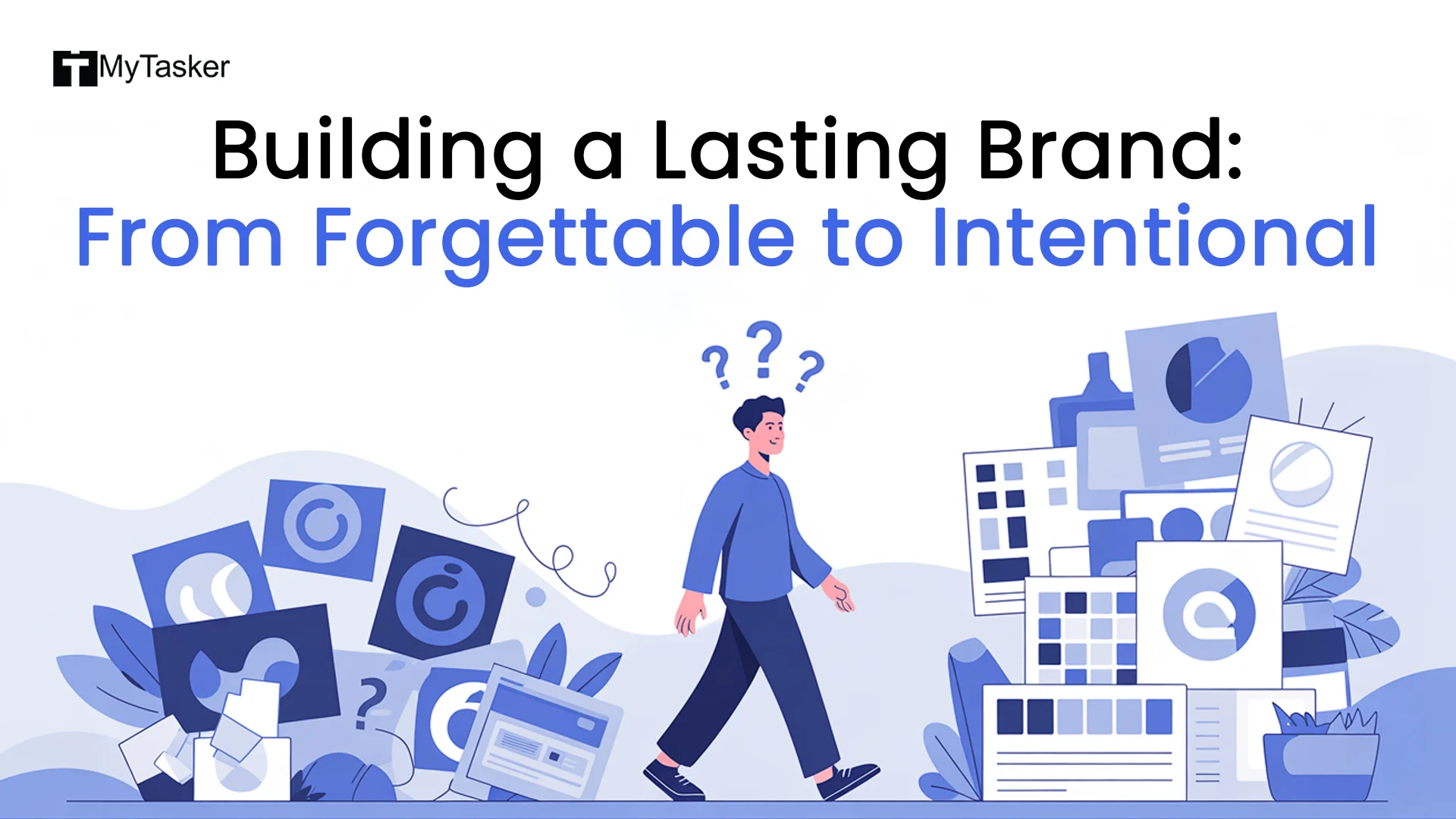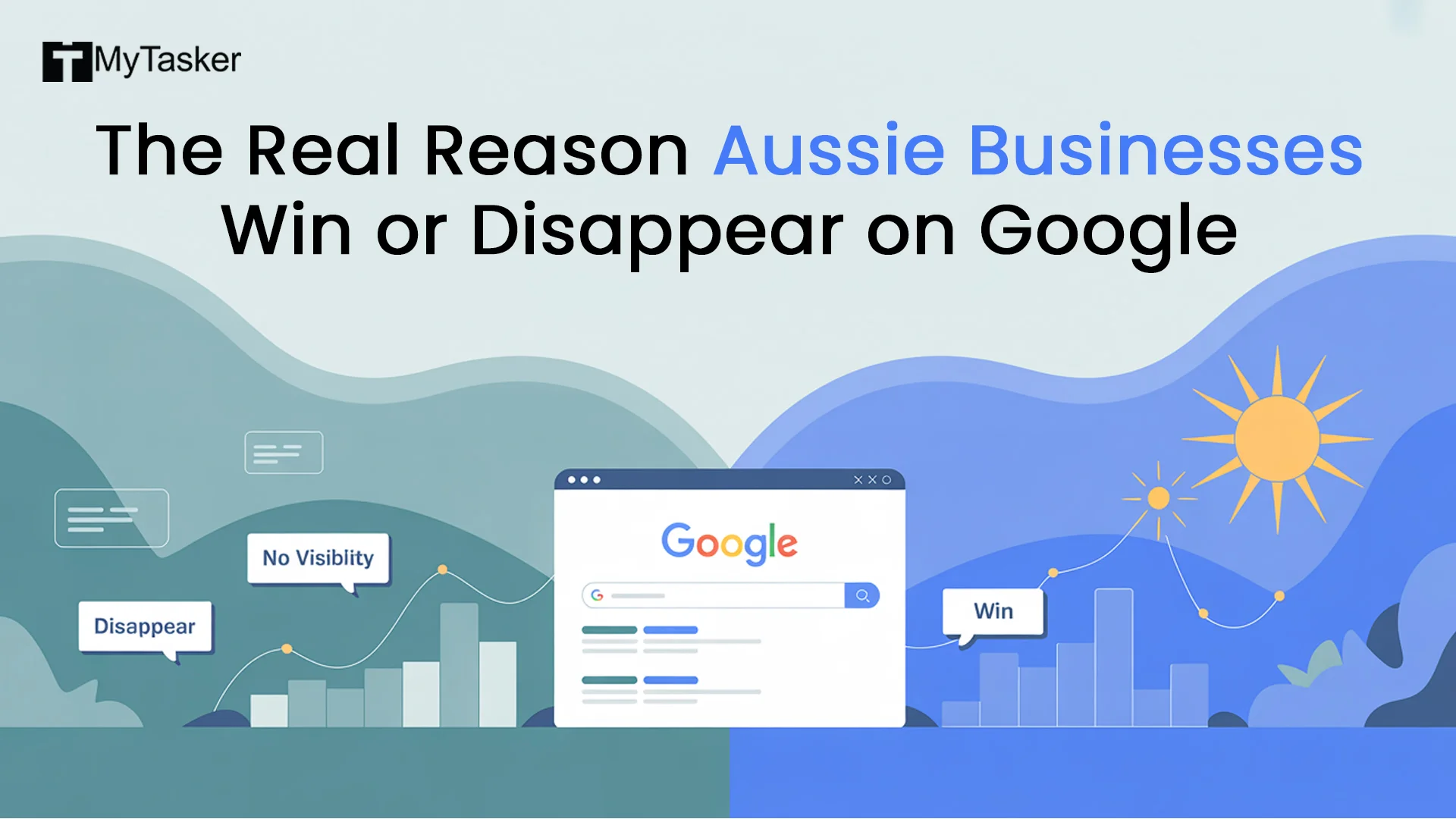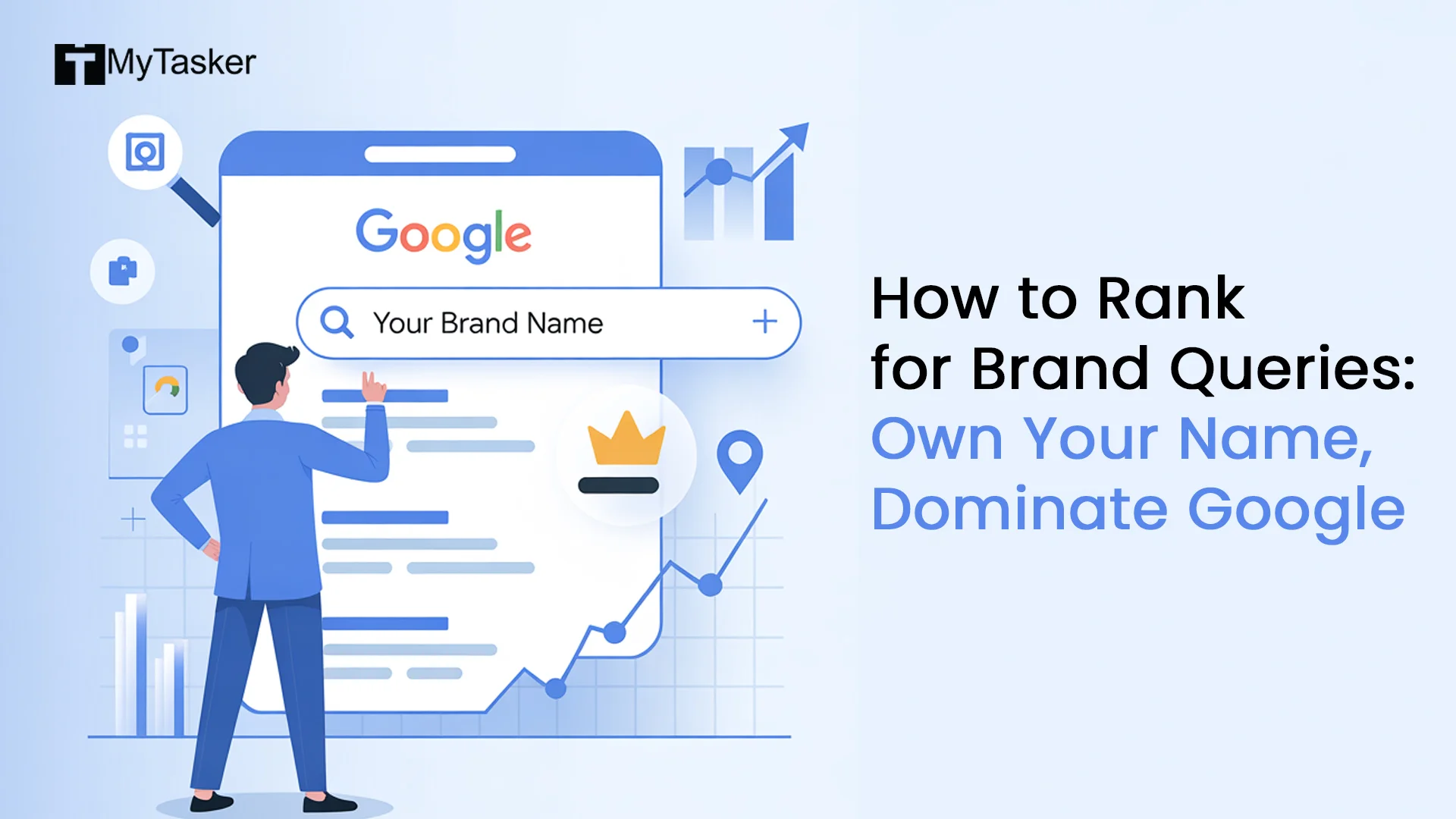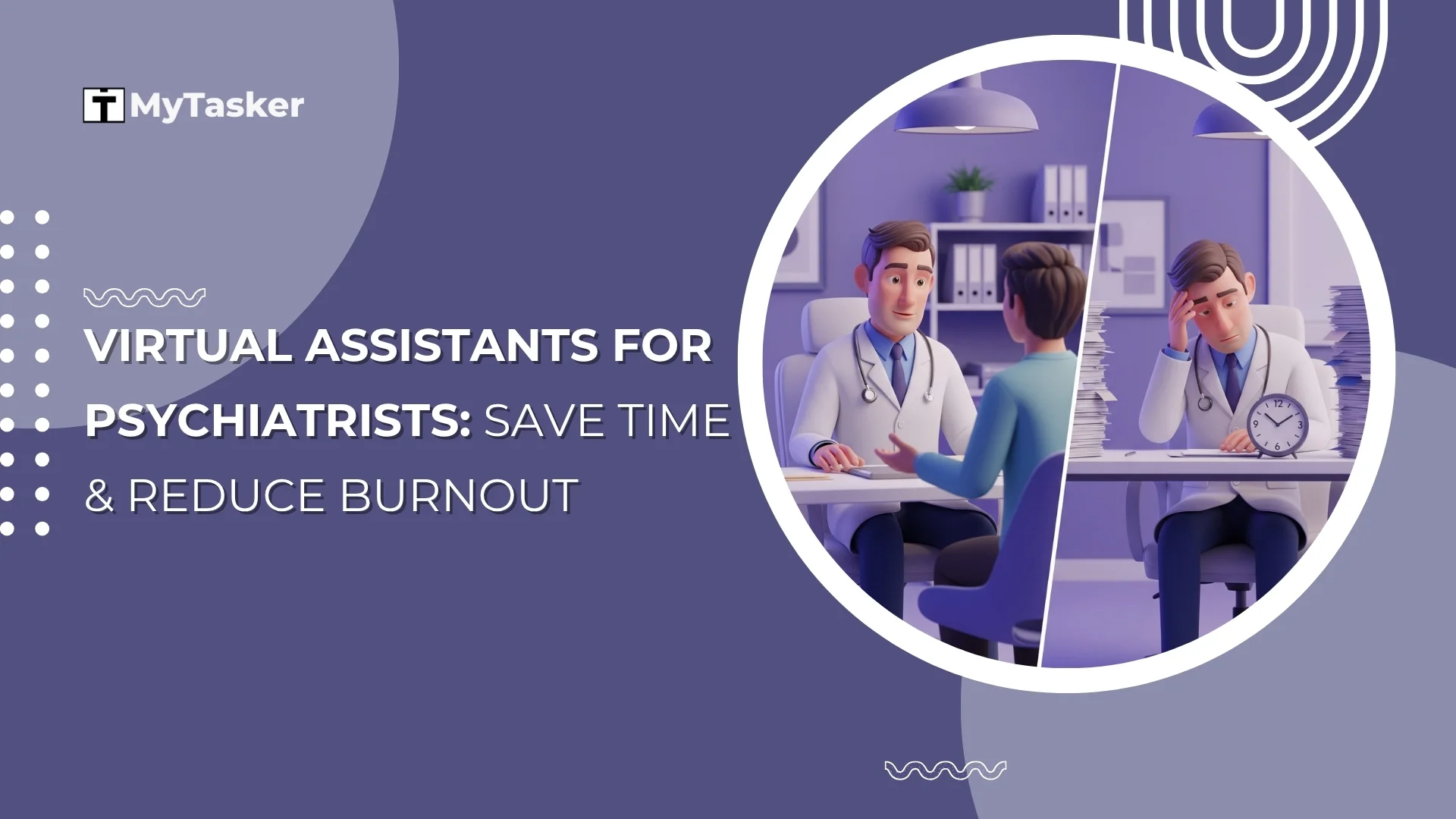We have seen movies made on AI and how it has ultimately proved to be the doom of humanity. This could be the basic reason why we have been so wary of the technological developments with AI that have been making breakthroughs.
AI or artificial intelligence was developed as a foe for humans but we all know that with the good comes the bad. Although helpful, AI has been causing some serious issues.
This is exactly why we believe that the collaboration of AI and humans is a much-needed duo. While AI can provide automated, faster, and simpler solutions to any critical issues, human intelligence can supervise whether the solutions are ethically or morally correct.
The idea of humans and AI together in all aspects is a sweet deal.
The Need For Collaborative Intelligence
If you are a business owner, you might be thinking, “But, wasn’t AI created to automate some tasks and lessen the need for manpower?” Well, you are not wrong in thinking that. But AI is still in its early stages, hence it’s prone to make mistakes that could damage your business.
Even though companies that have replaced manpower with AI tools saw a rapid spike in business, it has not been consistent. As per Harvard Business Review’s research on 1,500 companies, companies that use both AI and manpower achieve the most significant improvement in performance.
The reason behind this is simple -
What comes naturally to us humans, is tricky to Artificial intelligence. Such as, we can make a joke, and be sarcastic. However such cognitive thinking is yet to be adapted by AI and machine learning tools.
But the road to combining these two intelligences won’t be easy. Companies must understand when and where to put human effort into the automated solution provided by AI.
And that is the main purpose of this article.
Human-Assisted Machines
At first, companies must take the initiative to let human employees train AI tools. By doing so, humans can train machines to perform specific tasks. Afterward, they can also elaborate on the possible outcomes of the performed task especially whether the results are perfect, controversial, or counterintuitive.
This can be achieved by -
1. Training
Let’s start with the training part. In this scenario, the purpose of training the machine-learning algorithms is to get the designated job done. Massive training data sets are accumulated as part of this endeavor for assisting medical apps in identifying diseases, familiarizing machine-translation applications for handling idiomatic language, and recommendation engines to assist with financial decision-making.
Moreover, training AI tools to communicate with humans is another aspect that companies need to supervise. Microsoft’s AI assistant Cortana is a successful example of such training endeavors. However, it required constant and comprehensive training to develop human traits like confidence, helpfulness, and caring.
A playwright, novelist, and poet worked with a team to instill these qualities. Amazon’s Alexa and Apple’s Siri also were trained by humans to develop a specific personality to accurately reflect their brands. This is probably why Siri has a touch of sass which is expected by the consumers of Apple.
That’s just the start because AI assistants are now being trained to adapt more intricate human traits, such as compassion. There is already a technology named Koko developed by an of-shoot start-up of MIT Media Lab, that seems to show sympathy. For example, if you are feeling low and making a query regarding that feeling, Koko won’t simply reply with a monotone response. Instead, it will ask for more information from you and offer advice that might help you dissect your emotions deeply. Koko can help reduce stress by recommending to think of that emotion in a positive light.
2. Explaining
If you are aware of the black box problem, you would agree that AI tools and machine learning systems will require human assistants in order to define their conclusion-making behavior to people who are not experts in the field of artificial intelligence.
This role of “Explainers” is vital to dissect the decisions made by an AI application in legal fields where evidence is required to reach any conclusion. For example, a judge will need to comprehend the input provided by AI before sentencing whether someone is guilty or not guilty. Similarly, AI can be immensely helpful for insurers and law enforcement in critical cases like car crashes. Fields that are consumer-facing and require proper evidence and justification need an Explainer, as a machine’s output can be seen as biased, unfair, and even unlawful.
3. Sustaining
“Sustainer” is another job role that is required to ensure that the AI collaboration is functioning rightfully, responsibly, and safely. This job role is similar to safety engineers whose responsibility is to prevent harm caused by any AI systems. Industrial robots that work alongside humans have been trained by their developers to not harm humans by recognizing their presence nearby. Sustainers can also use data provided by the Explainers if AI causes harm regardless, such as incidents when self-driving cars are faced with fatal accidents.
There is another type of Sustainers who will ensure that AI technology is maintaining ethical practice. For example, if AI output is biased and discriminates against a particular human race, Sustainers must take proper action to address the issue with proper investigation. In a similar role, data compliance supervisors ensure that AI systems are instilled with GDPR and other consumer-protection regulations-approved data.
Apple uses the same method when collecting data about their customer in order to improve user experience. If the collection does not follow ethical guidelines, it can anger customers, compromise their personal information, and land them in legal complications. And that’s why, a group of experts is employed to ensure that while AI is properly collecting and storing user data, it is also not compromising the privacy of the users.
Machine-Assisted Humans
Just like humans are helping machines to be more human-like, smart machines are also helping human to expand their abilities in a number of different ways.
1. Amplifying
The main reason why AI usage is progressively growing is because it can provide a large scale of data at the right time. And by offering relevant data at the right time, AI can boost our decision-making, analytical abilities, and creativity. Autodesk’s Dreamcatcher is an apt example of this as it helps even the most recognized designers.
Imagine this: An architect is currently designing an energy-efficient and sustainable home. He/she has it all planned out such as the house must have a direct solar heating system, be built with eco-friendly materials, along with a floor that will maximize the natural light. All of this is within a $300,000 budget.
An AI tool called EcoBuild can help the architect get a number of designs upon entering all the specifics of the building such as dimensions, number of rooms, etc. The architect can also offer their feedback after reviewing the provided designs to get a modified design as per their unique preference.
This interactive process ensures that the suggested designs perfectly align with the provided criteria without investing much time or manpower. This way, the architect can focus on using their unique human attributes such as artistic perception and professional expertise.
2. Interacting
Companies can easily communicate with their employees and customers in an efficient and novel way, all thanks to human and AI collaboration. The AI agency Cortana, for example, can be used to simplify communication with fellow people or completely on their behalf. Furthermore, Cortana can interpret meetings and send a voice-searchable version to absentees. These AI chatbots are highly scaleable as one single tool can offer basic customer support to a large scale of clients at any given time.
A virtual assistant named Aida is currently being used by SEB, a popular Swedish bank, as a customer support tool to communicate with millions of clients. Aida has a vast storage of data, is programmed to hold natural-language communication, and give solutions to basic question such as how to make international payments, how to create new accounts, etc.
That’s not all, Aida can also detect the tone of the caller’s voice and identify whether they are frustrated or thankful for the information given to them. With this recognition, it can improve their level of service. Asking follow-up questions to the callers is also another feature of this AI chatbot. If the AI agent is not able to solve your problems or answer your question, then the call will be directed to a human customer care executive who will offer a solution upon reviewing the interaction between the caller and the chatbot. By solving the basic problems, Aida frees the valuable time of human representatives who can focus on more complex problems.
3. Embodying
There are several digital characters in the field of artificial intelligence, such as Aida and Cortana. However, in other circumstances, artificial intelligence is combined with a real robot made to help human labor. These AI-powered devices include cutting-edge sensors, motors, and actuators that give them the ability to recognize both humans and things. They coexist peacefully with people in settings like factories, warehouses, and labs. These devices can run securely next to people, without endangering human safety because of their advanced capabilities.
The industrial sector is undergoing a transition as robots get smarter and become "cobots" that collaborate with people. These robots are made to carry out physically demanding and repetitive duties, freeing up people to concentrate on more complex work. The effectiveness, productivity, and safety of the workplace all increase as a result of this relationship.
To expand the cobot concept, Hyundai is using exoskeletons. As a result of this, human employees will be able to perform their tasks with superhuman strength as the cobot works as an extension part of the human body. These are easier to control as they automatically adjust to the users.
Redefine Your Business
Business owners must redefine their business module in order to get the most worth out of their investment. By discovering and describing operational areas that can be improvised, businesses need to collaborate with AI.
After that, business owners should come up with a solution by collaborating with the shareholders on how to use AI and human intelligence together in order to simplify each process.
Imagine that there is a healthcare provider who wants to use AI to improve patient care and reduce overall costs. At first, the doctors developed a system that would help them diagnose the disorder and recommend treatment plans by scanning the patient’s medical records and previous relevant data.
Nevertheless, when developing this AI algorithm, developers discovered that there was an issue with the patients who didn’t show up to the appointment. This resulted in missed opportunities for early intervention and identifying proper treatment plans. The company decided to expand the AI system’s scope in order to deal with this issue.
The companies analyzed patient data (such as appointment history, communication preferences, demographic information, etc.) with machine learning algorithms and predictive analytics. This expanded AI system can now predict which patients are more likely to miss their appointments and take proactive approaches to decreasing the no-show rates.
By doing so, the doctors can not only improve the treatment recommendation and diagnosis accuracy but drastically reduce the rate of missed appointments.
We have discovered five critical areas that company owners commonly want to improve, collaborating with AI. These are speed, flexibility, decision-making, personalization, and size. When redefining a business module, discover how collaborating human and artificial intelligence can help improve these aspects to bring the changes you want to see.
1. Speed
Speed is valued in some organizations. One such procedure is credit card fraud detection. Businesses only have a few seconds to determine whether or not to approve a certain transaction. They will undoubtedly be responsible for the loss if it turns out to be fraudulent.
HSBC Bank has adapted to an AI-based system to identify fraud with precision and increase efficiency. This AI algorithm scans through a variety of user data such as user behavior, purchase location, IP addresses, and millions of transaction data to identify fraud signs. The HSBC Bank has successfully lowered the undiscovered fraud percentage and false positives in the USA.
Now HSBC has scaled out this technology in Asia and the UK. Moreover, Danske Bank’s application of the new AI technology has decreased false positives by 60% and improved the rate of fraud detection by 50%. Investigators may now concentrate their efforts on unclear transactions that the AI has identified and that need human evaluation because there are fewer false positives.
With AI’s flawless detection, you can identify more cunning frauds which then leads to better detection. Due to this continuous cycle, the algorithms and scoring models run out of storage and require to be updated every now and then.
2. Flexibility
Inflexible procedures caused several problems for Mercedes-Benz management, this year. The company’s most important clients were demanding personalization of S-class sedans but due to high demand, the company couldn’t meet the sudden rise in personalization requirement.
Evidently, car production has been a time-consuming process with the “dumb” robot’s automated stages. That’s why, Mercedes had to modify the procedures to adapt to a more human-machine collaboration to decrease errors, increase flexibility, and replace those robots with AI-backed systems known as cobots. Cobot arms at the company’s plant near Germany and Stuttgart are operated by human workers. These arms are becoming an extension part of the workers to pick up and place heavy parts. This new approach to producing cars places the human worker in charge of the process without having to deal with intense physical labor and errors made by robots.
The company’s human-machine collaborative team is flexible and can adapt on the go. As the workflow changes, the cobots presented at the plant can be controlled with a tablet to conduct different jobs and meet the requirements. Such adaptability has helped the manufacturer reach a different level of flexibility that was unimaginable before. Marcedez now has the option to personalize a vehicle’s features as per the real-time request made by the consumer at the dealerships.
3. Decision Making
Guiding AI and providing it with tailored information can help human workers and business owners. It’s especially helpful for the workers who are working on the tracks as making the right decision can greatly influence the outcomes.
One such example is virtual models of physical equipment, also known as the “digital twins” that improve and maintain the equipment. General Electric is a company that routinely updates its software models with the help of real-time operational data traced from the equipment. This is carried out to monitor its industrial goods, for example, turbines. Moreover, GE has accumulated a lot of data on atypical and average performance, all thanks to the data collection from the different units in the fields. The machine learning algorithm in GE’s Predix platform can detect when a certain machine part is likely to break down.
This technology has drastically changed the process of maintaining industrial equipment that is completely decision-centric. As we mentioned earlier, Predix can detect future wear and tear in the machinery equipment, such as rotor wear or turbine tear, analyze any component’s operational history, predict up to 70% loss in the remaining lifespan of the rotor, and indicate the fourfold increase in damage over the few months in the past.
After that, it can also offer suitable solutions depending on the operating environment, the current state of the machine, and considering the data from similar maintenance and damage on other machines. That’s not all, Predix is designed to offer data on the cost and financial benefits of these recommendations with up to a 95% confidence level when analyzing the underlying assumptions.
If Predix was not in the picture, workers could catch rotor damage during supervision with only luck. So much so that the rotor could get completely damaged due to this lack of detection which could result in an expensive repair session. Evidently, Predix has helped maintenance personnel up to date with the possible issues before they get worse. They also get the necessary assistance when making important decisions, which results in saving millions of dollars.
4. Scale
Improper scalability is the core reason why many companies are not seeing any growth. It’s especially true in scenarios where intensive human labor along with minimal machine assistance is required. For example, a farming operation in an agricultural sector was seeking a way to crop yields along with less resource usage. Conventional farming practices heavily rely on instinct and on-spot decision-making. Therefore, coming to efficient and sustainable results becomes all the more challenging.
By applying artificial and human intelligence in this sector, agriculture can transform itself completely. With the help of sensors and drones, the farmers collected important data such as moisture levels, solid conditions, temperature, and crop health. All this data was then instilled into AI systems that were designed to provide real-time information on a large scale. With the proper guidance of the farmers and agronomists, the AI algorithms were capable of designing irrigation schedules, pest control strategies, and even the best planting patterns.
Throughout the trial sessions, the human expert could monitor AI’s recommendations and make necessary changes as per their practical knowledge. During harvest time, AI-driven machinery could reduce waste and increase the overall yield by specifically detecting the ripest corps for harvesting. All thanks to their computer vision.
This collaboration of AI-driven precision farming and human insight easily increases the rate of crop yields, brings on more sustainable agricultural practices, and reduces resource usage.
5. Personalization
To reach the peak of marketing, companies must deliver personalized and distinctive user experiences to customers.
This level of personalization is possible to carry out on a larger circle due to the application of AI technology. Take Spotify for example - it offers personalized playlists to millions of its listeners by collecting data such as what type of songs, artists, and genres they listen to. Another example is Starbucks which uses AI to detect customers’ mobile devices and order history with their permission to let baristas offer recommendations. Customers can choose their best pick by scanning through this recommendation list which automatically improves the user experience.
Conclusion
AI can be our foe in many ways, we just have to adapt to the new changes it brings. We hope that this set of recommendations for collaborating AI and human intelligence helps you to redefine your business and beat the competition. Do ensure that you have prepared your employees for the trial and error phase. It would take more than just implementing AI technology into the work process as proper training and commitment of the employees are the most important aspects of doing so.
Want a helping hand to ace all things AI? MyTasker is here for you. Our virtual assistance can help you identify the areas in which you can make use of this collaborative intelligence to generate the maximum profit. The good news is, that you can try our services with an exclusive trial. Contact us to combine the benefits of human intelligence with AI capabilities.



.jpg)
